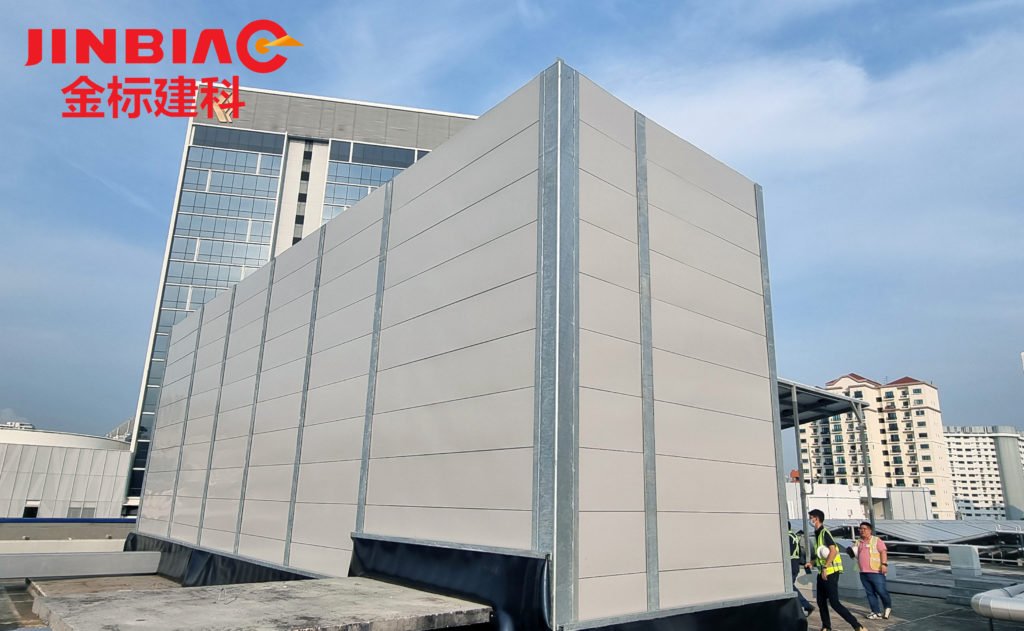
When it comes to reducing noise pollution, there are numerous methods that can be employed to achieve the desired outcome. Noise barriers are one of the most effective noise reduction techniques that can be implemented in various settings, including residential, commercial, and industrial areas. A noise barrier is a physical structure designed to reduce the impact of noise on the environment by blocking or reflecting sound waves. These barriers can be made of various materials, such as concrete, wood, or steel, and can take on different forms depending on their intended use.
- Environmental Noise Barrier Applications
Environmental noise barriers are an important type of noise barrier that is designed to mitigate noise pollution originating from various sources such as traffic, industrial machinery, and construction sites. They are installed in outdoor settings and are intended to reduce the amount of noise that is transmitted to residential areas, schools, hospitals, and other noise-sensitive locations.
Environmental noise barriers are typically made of sound-absorbing materials such as concrete, steel, and wood, and they are designed to absorb, reflect, and diffract sound waves. They are also available in different heights, widths, and shapes to suit specific applications. The installation of environmental noise barriers has been found to be an effective way to reduce noise levels and improve the quality of life for people living and working in noisy environments.
- Industrial Noise Barrier Applications
Industrial noise barrier applications are one of the most common types of noise barriers, which aim to reduce the noise generated by industrial activities such as manufacturing, power generation, and transportation. These barriers are designed to block the transmission of sound waves by using a combination of sound-absorbing materials and sound-reflecting surfaces. The materials used for these barriers include concrete, steel, and composite materials, which are specially designed to withstand harsh industrial conditions.
In addition, the installation of these barriers is critical to ensuring maximum effectiveness, and they can be mounted on walls, fences, or free-standing structures depending on the specific need. Industrial noise barrier applications are an essential tool for reducing noise pollution in urban and industrial areas, and their use is becoming increasingly popular as a solution for noise reduction and environmental protection.
- Transportation Noise Barrier Applications
Transportation noise barriers are essential structures that are designed to reduce the level of noise generated by vehicles on highways, railways, and airports. The use of noise barriers has become increasingly important in urban areas, where traffic noise has become a major source of environmental pollution.
Transportation noise barriers are typically built as walls or fences that surround transportation infrastructure to block the sound waves from reaching nearby communities. These barriers are made from materials such as concrete, metal, and composite materials, and they can be designed to fit the specific needs of different transportation applications. In this document, we will discuss the different types of noise barriers according to their use, starting with transportation noise barrier applications.
- Recreational Noise Barrier Applications
Recreational noise barrier applications are a subcategory of noise barriers that are designed to reduce noise levels in outdoor recreational areas. These areas may include parks, playgrounds, and sports fields, among others. The primary objective of recreational noise barriers is to create a more tranquil environment for people to engage in their desired activities. Noise barriers in these settings are typically made of materials that can withstand outdoor weather conditions such as wind, rain, and sun.
The use of noise barriers in recreational areas can significantly reduce noise pollution while promoting healthier and more peaceful environments. It is important to consider the type of activities taking place in a particular recreational area when selecting the appropriate noise barrier solution.
- Architectural Noise Barrier Applications
Architectural noise barriers are a type of sound-absorbing structure that can be used to reduce noise pollution in various settings. These barriers are specifically designed to be visually appealing and can be used in many different architectural settings, including residential, commercial, and industrial environments.
Architectural noise barriers are typically made from high-quality materials, such as concrete, steel, or wood, and can be customized to fit the specific needs and aesthetic preferences of the space. They are an effective solution for reducing noise levels from sources such as highways, airports, railroads, and industrial sites, while also enhancing the visual appeal of the surrounding area.
Overall, architectural noise barriers are an excellent choice for those looking to combine noise reduction and architectural design.
Hebei Jinbiao is a leading company in Noise Barrier products and Fencing products in Singapore. We guarantee to provide you with the most high-quality Sound Barrier and Fencing products along with our dedicated assistance. Do not hesitate to contact us. We are looking forward to helping you solve your noise issues, safety issues and protecting you from noise pollution as well as ensuring your safety.
